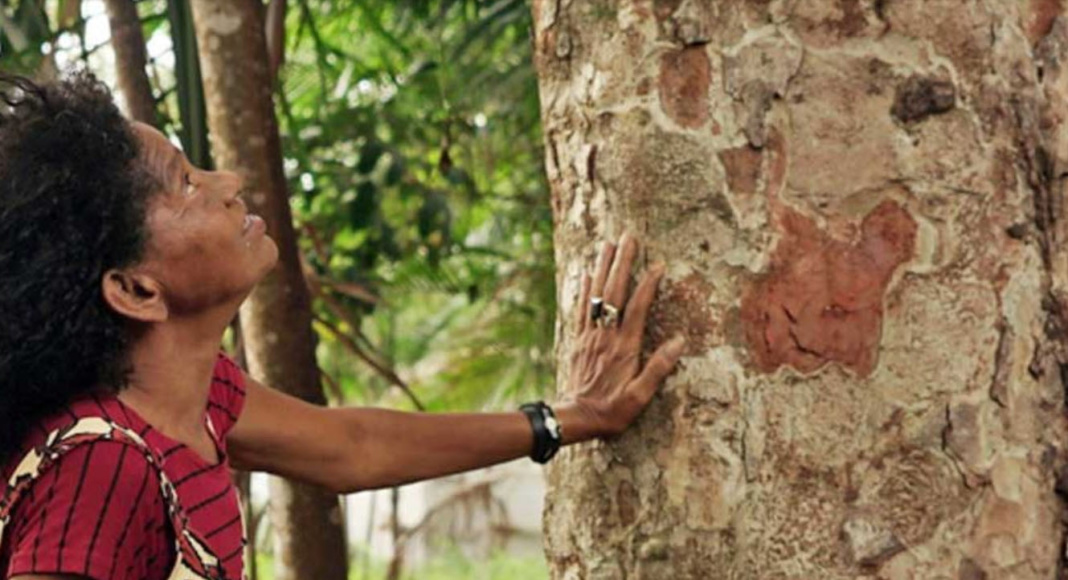- Residents of traditional communities in the Brazilian Amazon municipality of Barcarena, near the mouth of the Amazon River, say that their subsistence and commercial livelihoods, and their health, have been destroyed by an invasion of mining companies which began in the mid-1980’s.
- Among the gigantic companies moving into the region were Brazil’s Vale, Norwegian-Japanese Albrás, Norway’s Norsk Hydro, and France’s Imerys Rio Capim Caulim. Community complaints say that the firms allegedly stole community land and polluted land, water and air.
- Meanwhile, according to residents, the government rewarded the companies with subsidies, looked the other way when community lands were appropriated and pollution occurred, and paid for mining firm infrastructure, including the Tucurui mega-dam; port of Vila do Conde, and a network of new roads.
- Also, a string of mining disasters punctuated the years, with the worst by Norsk Hydro in 2018 at the Hydro Alunorte facility. Though local waters, blood and hair have proven to be contaminated with mining-related toxins, the companies defend themselves by saying no particular firm can be pinpointed with the harm.
- This story is the fifth in a series reporting on the legacy, current status and likely future of bauxite mining in the Trombetas river basin and Amazon delta. Journalist Sue Branford and filmmaker Thaís Borges journeyed there in February, 2020. Their investigation of aluminum production is especially relevant now, as Brazil’s Bolsonaro administration pushes to open the Amazon’s Indigenous reserves and other protected areas to large-scale industrial mining.
- This article was first published on Mongabay on 10 December as part of the Mongabay Series: Amazon Infrastructure, Global Forests. You can read the original here.
BARCARENA, Pará state, Brazil — Maria Socorro da Silva lives in the Amazon, but hasn’t heard birdsong in her backyard for many months. “Do you see those guavas?” she asks, pointing to a tree covered in ripe fruit. “Birds won’t eat them.” Then she points to the fruit on the ground. “Chickens don’t go near them. They can sense that they’re polluted, but I can’t,” says Socorro, as she bites into a luscious guava.
Socorro lives in Barcarena, 50 kilometers (31 miles) from Belém, the capital of Brazil’s Pará state, near the mouth of the Amazon River. She is also president of the Association of Caboclos, Indigenous and Quilombolas da Amazônia (Cainquiama), which represents thousands of the region’s forest dwellers.
Forty years ago, Barcarena was a peaceful fishing community, inhabited by traditional ribeirinho (riverine) families. But in the mid-1980s the international mining industry arrived and transformed the community into one of the Amazon’s main industrial and shipping hubs, while failing to consult inhabitants about the takeover, say residents.
Today, three immense mining processing plants crowd closely together in Barcarena: Hydro Alunorte, the largest alumina refinery in the world, controlled by the Norwegian company, Norsk Hydro; the Norwegian-Japanese Albrás company, Brazil’s largest manufacturer of primary aluminum; and the French Imerys Rio Capim Caulim, the world’s largest processor of kaolin, a mineral used mostly in the making of paper and pottery.
So much heavy industry, concentrated in one place, in a country whose government habitually favors industry over the rights of the people, with poorly upheld environmental regulation and enforcement, was a recipe for socio-environmental catastrophe, and so it has proved, say analysts.
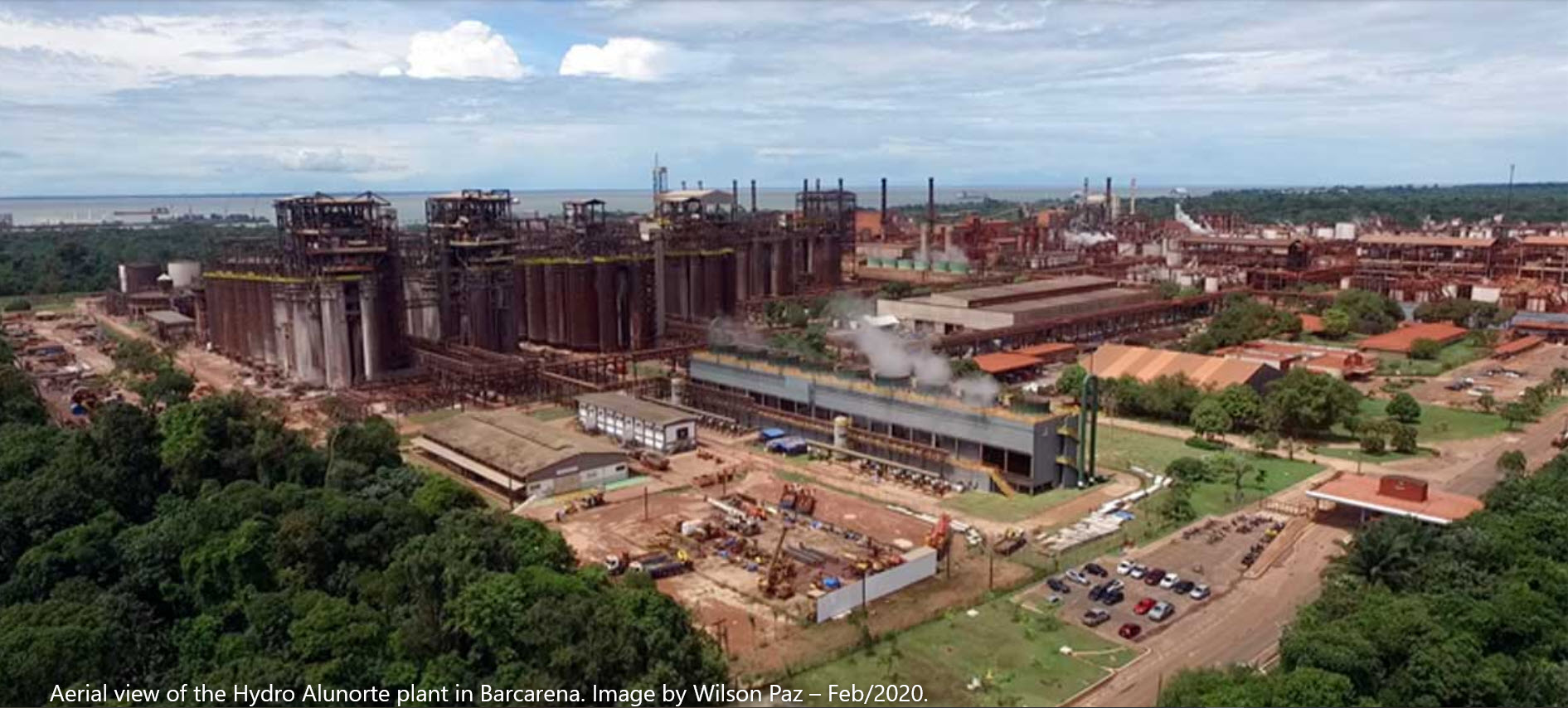
In 2018, Federal Prosecutor Bruno Valente noted: “Barcarena has an impressive history of environmental accidents, on average, one a year.” Data from the Human Rights Commission of the Pará Legislative Assembly show this to be no exaggeration, with 22 accidents recorded from 2000 to 2018. Of these, 11 involved water contamination, with leakage of toxic waste containment basins, while three entailed air pollution, with the discharge of huge amounts of soot from factory chimneys. The affected population says there were even more accidents in the same period; 27 in total.
“Before, I had a good life with my family. But today, if I grow watermelon, manioc or pumpkin, no one buys it because it’s all contaminated. How can I earn my living?” asks Raimundo Barros, from the quilombola community of São Sebastião do Burajuba (quilombolas are descendants of runaway slaves who established Brazilian quilombo communities in once remote rural areas, many in Amazonia).
Before the arrival of the big companies, riverine families grew subsistence crops and earned money from selling fish and collecting forest products, explains Paulo Feitosa, from the Social Movement of Ribeirinhos (traditional riverine people) in the Pará River Basin, that represents about 10,000 local families
“Today [many] families can’t feed themselves from the environment they live in, and many go hungry when the açaí harvest ends. Fishermen find it hard to catch fish and shrimp in the river. And when they manage it, they know they are eating contaminated fish,” Feitosa says.
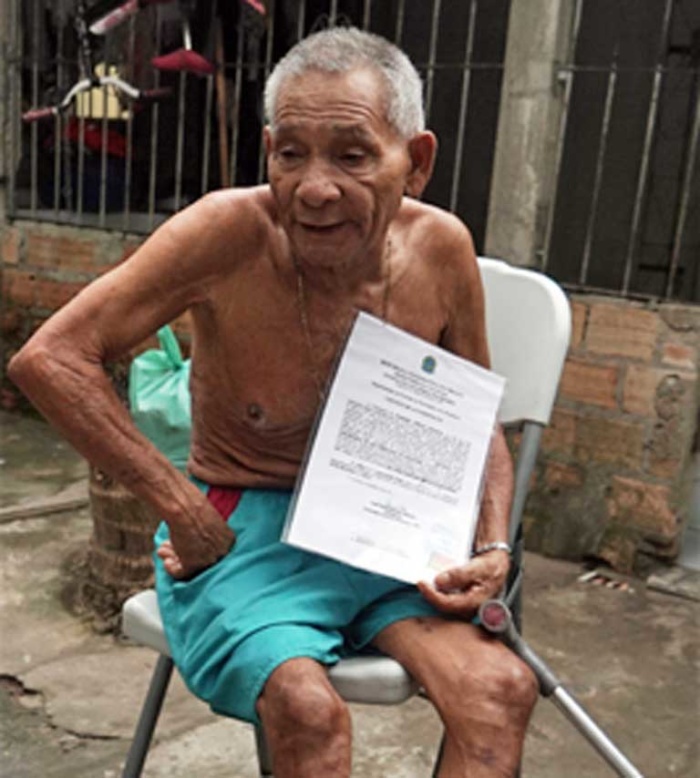
Local people told Mongabay that they have long lacked monetary and food security, while also suffering from social inequality and health problems, ever since the mining industry arrived and poisoned the air, land and water, and destroyed subsistence and commercial livelihoods.
In contrast, Barcarena today is among Pará state’s richest municipalities, ranking seventh in per capita GDP, ahead of another 137. But the wealth is very unevenly distributed. Away from the municipality’s center and a few wealthier areas, signs of extreme social deprivation are everywhere. Traditional communities, lying in the shadow of the mining processing plants, lack basic sanitation, treated water, paved roads and street lighting, while most people dispose of home waste in open-air garbage dumps.
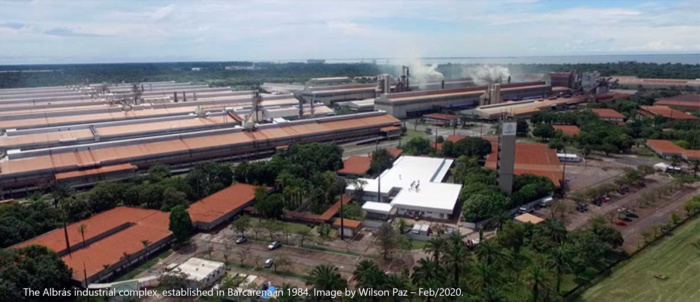
Albrás and inequity arrive
Barcarena’s central role in the manufacture or alumina and aluminum stems from the extremely rich reserves of bauxite found in the lower reaches of the Amazon River Basin, where the municipality is located.
Mineração do Rio Norte (MRN) — originally set up by a Canadian mining company — opened its first bauxite mine beside the Trombetas River in 1979. That’s when the world’s big mining companies realized they could rely on this new, large and reliable supply of bauxite ore, and began moving their polluting and energy-intensive alumina and aluminum industries to the remote Brazilian Amazon, and away from their developed home countries where they were already seeing environmental, legal and public relations problems.
The first mining giant to arrive in Barcarena in the early 1980s was Albrás — then a joint venture between Brazil’s gigantic state-owned mining company, Vale do Rio Doce (51% of investment capital), and Nippon Amazon Aluminum Company, an association of 32 Japanese firms (49% of capital).
The military dictatorship ruling Brazil at the time was keen for the companies to move in, so it paid for expensive infrastructure with public money. It built major public works projects including the Tucurui hydroelectric power station and mega-dam on the Tocantins River to provide cheap electricity for ore processing; along with the port of Vila do Conde in Barcarena; and a network of roads and river transport corridors supporting the mines, processing facilities, and mineral export.
Those huge preliminary government investments are ongoing today: According to the Chamber of Electric Energy Commercialization (CCEE), a national body that oversees the sale of electricity, Albrás, Brazil’s largest individual energy consumer, began receiving subsidized electricity from the Tucuruí dam in 1984 and is still receiving it, though the level of the subsidy has fallen substantially.
In fact, the generous subsidies handed out to the mining industry continued after Brazil’s return to civilian rule in 1985, and under successive conservative and progressive governments, and continues even now under President Jair Bolsonaro.
But the local ribeirinho communities, their lives disrupted by largescale mining’s arrival, experienced few of those percs, but many problems. “The conflicts began with the expulsion of ribeirinhos from their land, to make way for the ports and industries [the government was] installing there, in a process that has carried on until today,” explains Feitosa.
At first, Albrás imported alumina. Then in 1995 Alunorte, initially owned by Vale do Rio Doce (as Vale, Brazil’s huge mining firm, was then called), entered the picture and began providing Albrás with all the Brazilian-produced alumina that it needed, most of it made with bauxite mined by MRN in the Trombetas River Basin. MRN too is known for its legacy of disrupting traditional communities and polluting land and water.
Other companies soon joined Albrás and Alunorte in Barcarena, most notably Imerys Rio Capim Caulim S.A. About a hundred other smaller companies sprang up, providing services and manufacturing inputs to the mining processing facilities.

Accidents
One of the most serious in a long list of environmental accidents occurred in 2007, when the Imerys plant was responsible for a large spill of kaolin clay waste. According to a Dossier on Mining Disasters in Barcarena, about 200,000 cubic meters (52.8 million gallons) of the waste reportedly poured into the Curuperé and Dendê creeks, with some of the discharge reaching the Pará River. Dozens of families living in the industrial zone had to be rapidly evacuated to avert a far more serious disaster.
Simone Pereira, a university lecturer who coordinates LAQUANAM (The Laboratory of Analytical and Environmental Chemistry) at the Federal University of Pará, studied the impact of the accident. “Sulphuric acid is used as a whitener in the processing of the kaolin,” she explained. “When attacked by the acid, the mineral releases heavy metals such as barium and cadmium, that until then are contained. It’s these toxic metals, some of them carcinogenic, that are found in the waste that went into the watercourses used by the population.”
The company minimized the impact at the time, saying that not even fish had been killed. But Pereira pointed out that fish had previously all disappeared in 1996, when the company began discharging acid into the river locally. “There are no fish there anymore, there’s no life there,” she said.
When Mongabay contacted Imerys about its reported involvement in 12 environmental accidents in Barcarena, it replied that “it acts within current Brazilian legislation, that demands rigid environmental controls and that it invested R$15 million (US$3.6 million) in the safety of its [waste] basins in 2109.” It did not answer questions about the possible presence of heavy metals in its tailings or reports that its basins were not made waterproof until 2007.
The 2007 accident didn’t jeopardize the company’s close relationship with the authorities. Instead, three years later, the Pará state government, headed by Ana Júlia Carepa from the left-of-center Workers’ Party (PT), extended the company’s exemption from ICMS — a sort of value added tax on the circulation of merchandise and services — offering it to almost all of the firm’s operations.
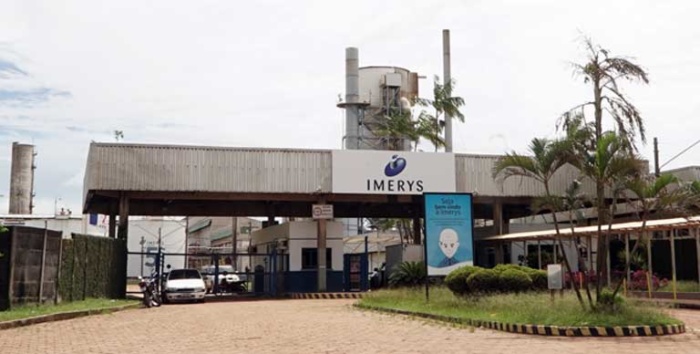
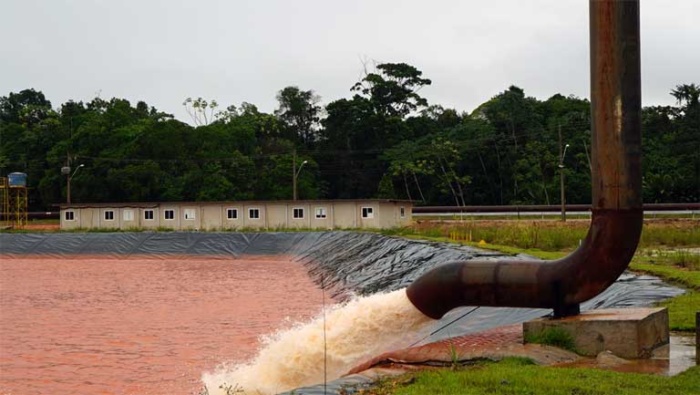

Other mining disasters followed. In 2009, a major spill occurred at the Alunorte plant, which, killed fish and damaged biodiversity along the Murucupi River, according to IBAMA, Brazil’s environmental agency. Vale, which owned Alunorte at the time, blamed “rain that occurs once in a thousand years.” IBAMA imposed three fines for damage caused to the river but by 2018 these fines had not been paid.
LAQUANAM analyzed water from the Murucupi River after the accident and found toxic elements. Pereira noted that, while it’s not possible to link Alunorte to the presence of some of these heavy metals, including lead, the evidence against the company is stronger for other pollutants, including aluminum, particularly because high concentrations are found near the plant.
In 2009, Marcelo Lima, a researcher with the Evandro Chagas Institute (IEC), a body linked to Brazil’s health ministry, carried out a pilot study in Barcarena to assess air quality by looking at bioindicator flora — that is, plants that react in the presence of pollutants. He found the reactions were stronger, the closer the plants were to the ore processing facilities.
Pereira says that government failed to tackle the underlying problem, highlighted by the IEC study: “Neither Alunorte nor Imerys have been made to restore the biological life of the rivers they contaminate,” she said. “Material full of lead, cadmium and aluminum is still there [in the rivers] and people are still drinking this water and eating fish from it.”
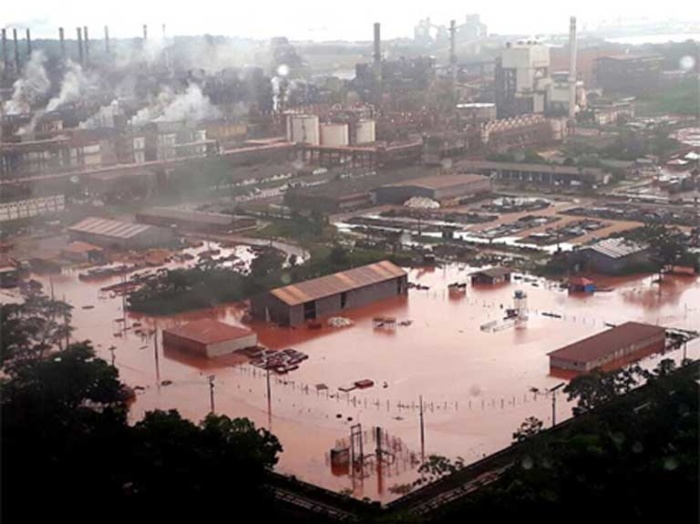
The worst disaster, so far
What is likely the most serious accident yet, occurred in 2018, when, according to local residents, major storms on February 16 and 17 caused an Alunorte containment basin to overflow. By then, control of Alunorte had been transferred to the Norwegian conglomerate, Norsk Hydro, which had bought 92% of company shares from Vale in 2011. The Justice Tribunal for Pará State immediately placed an embargo on the containment basin, pending an investigation.
The communities of Bom Futuro, São Sebastião do Burajuba and Vila Nova were the most severely affected, with residents alleging that the water in their creeks and artesian wells had been contaminated by toxic red mud flowing from the containment basin. Images of the flooded mining processing plant were splashed across the global press.
A report made by the Evandro Chagas Institute, at the request of the Federal and State Public Ministries, which are bodies of independent litigators, concluded that the waste basin had overflowed. It based this judgement on two pieces of evidence: the level of aluminium in the rivers was 25 times above the legal limit; and an inspection had discovered two apparently clandestine pipes that were discharging untreated industrial waste directly into the water course.
Alunorte rejected the conclusions of the studies. It said that the two pipes had not been used since the plant was built, though it admitted that during the flooding they had leaked rainwater. The company presented technical reports that found no evidence of an overflow. Just like Vale with respect to the earlier accident, it blamed the flooding on “atypical rain, of the kind that only occurs once in 10,000 years.” At the time of the accident, one of the basins, called DRS2, was still being tested and without an operational license. Even so, Carlos Eduardo Neves, the company director of operations, said that different authorities had inspected the plant 92 times in 2018 and had not produced evidence of an overflow.
At the end of September Alunorte signed an extrajudicial agreement (Termo de Ajustamento) with the Public Ministry to supply families near the plant with emergency drinking water and food vouchers. At the same time, the company agreed to pay, within ten days, a fine of R$23 million (US$5.7 million) with respect to the damage caused in February 2018, along with the R$5 million (US$2.8 million) fine imposed in 2009 and still outstanding. Among other measures the company also committed to implementing a system for real-time monitoring of the levels of the channels leading off the containment basins.
“We signed the deal so that the embargo over our operations would be lifted and because we are concerned about the wellbeing of our neighbors,” Carlos Eduardo Neves, Alunorte’s operations director, told Mongabay.
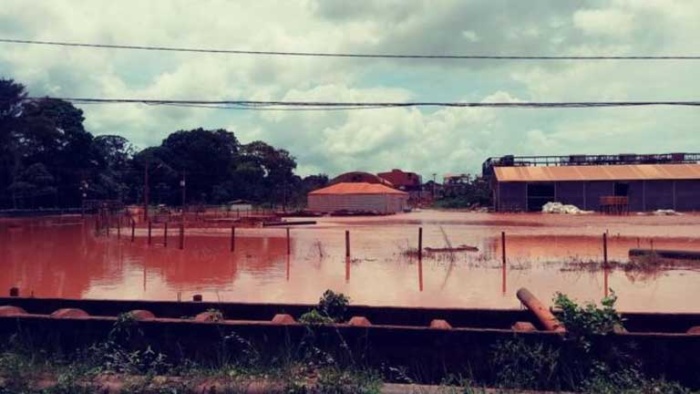
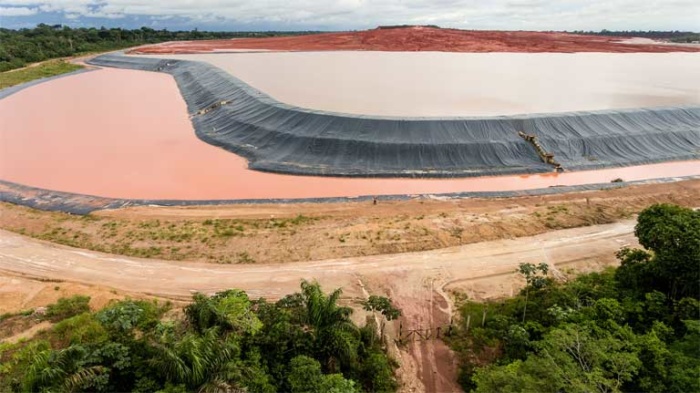
Contacted by Mongabay, Halvor Molland, the senior vice-president of Norsk Hydro, backed the version given by the local operations director. He said: “Based on internal and external inspections, we have no reason to believe that there has been any leakage from the bauxite residue deposits at Alunorte.”
Molland also echoed the point made by Pereira that the location of the various processing plants, each so very close to the other, makes it difficult to attribute blame: “Alunorte is located in an industrial area, where for decades several large industries have been present. It is therefore often difficult to attribute substances found in the surrounding area.”
A Parliamentary Enquiry set up by the Pará State Legislative Assembly concluded that Alunorte was probably responsible for the 2018 accident. In its report, it made 21 recommendations. One of them, to the Norwegian government, was for an investigation into the company’s failure to comply in Brazil with the “2014 Norwegian code of practice for corporate governance.” Other recommendations to Alunorte and to the Pará state government were for more effective measures for monitoring the safety of the plant, its environmental impact and the health of the affected populations.
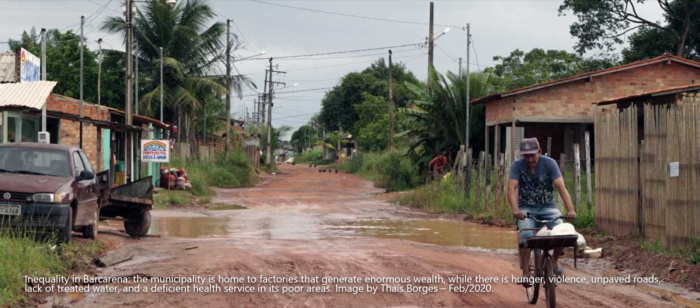
Rapidly accelerating output
The controversy over this accident continues today. In a recent academic article about Barcarena, researcher Sabrina do Nascimento notes that the Pará state government’s environmental agency, SEMAS, did not regard DRS2 as a new structure but as an extension of the original one, DRS1. As such, it didn’t ask for a new Environmental Impact Assessment (EIA) for DSR2, but allowed the company to use the original EIA, carried out in the 1980s.
Questioned by Mongabay, SEMAS did not comment on the need for a new EIA and said that its licensing process is continuous and conforms with legal requirements.
Nascimento says that the situation radically changed over the years: Whereas in the 1980s Alunorte was producing around 800,000 tons of alumina per year, by 2018 its output had soared to around six million tons annually. She believes that it is the company’s failure to increase sufficiently its ability to handle toxic residue deposits, and the limited capacity of its water treatment stations, that lies behind several disasters.
She notes that in 2003 the tailings dam overflowed twice, soon after the company had doubled its productive capacity, and that the 2009 disaster also occurred soon after a third expansion in productive capacity.
This direct correlation, she claims, “is evidence of the plant’s incapacity to treat and store tailings in the wake of an exorbitant growth in production.” Blaming the heavy rains — a so called “act of God” — begs the question of whether the waste catchment basins were adequate to safely store the waste from radically increased aluminum production.
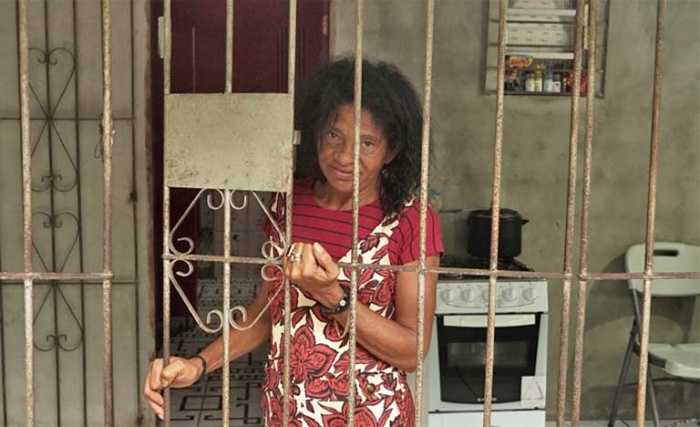
Heavy metals in blood and hair
Despite the furor over the many accidents, local residents say little has improved.
“The government signed our death sentence when it brought these companies here,” Socorro stated. She says that blood and hair tests have shown conclusively that local residents’ bodies are contaminated by lead and aluminum. Yet, she complained, neither the mining industry nor the government “is providing us with any way of removing these metals from our bodies.”
In a report produced in 2018, LAQUANAM said it had examined hair from 14 different communities and 91% of those examined had higher levels of lead than in the control group. Pereira said that the lead and nickel levels found were three times higher than those in control groups, and the level of toxic chromium was five times higher. But, she added, aluminum itself was the champion. The group’s hair contained 27 times more aluminum than the control group. Cadmium, chromium and nickel are classified as group 1 carcinogens by the International Agency for Research on Cancer.
In 2019, the Evandro Chagas Institute published a study entitled “Human Blood Lead Levels and the First Evidence of Environmental Exposure to Industrial Pollutants in the Amazon” that examined levels of lead in communities close to the Barcarena plants.
Among other conclusions, it found that in one of the communities the level of lead in adults was up to five times higher than the maximum level recommended by the World Health Organization, and in children it was up to eight times higher. Marcelo Lima, one of the IEC researchers, told Mongabay that they had also found populations with high levels of cadmium and were currently investigating levels of manganese.
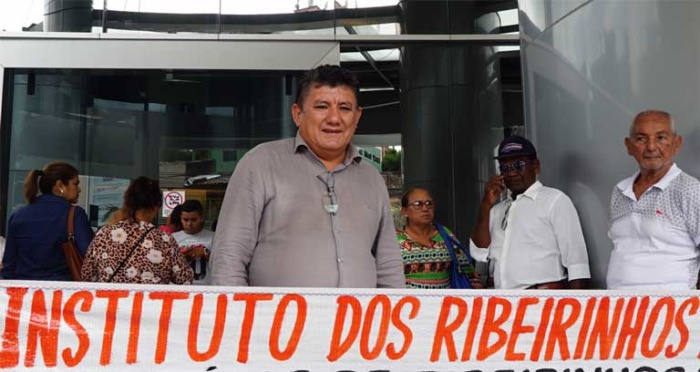
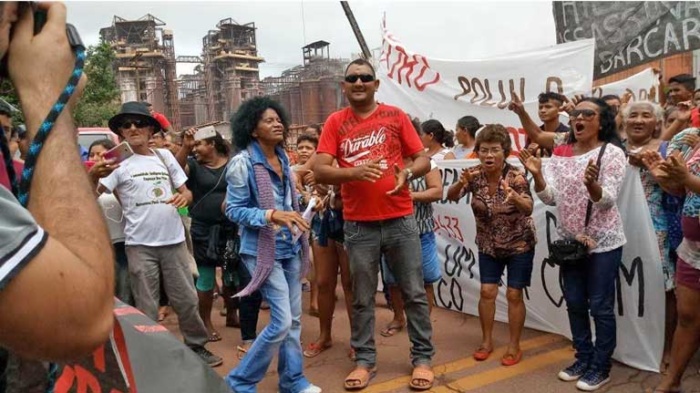
Socorro and her husband believe they are living proof of this mining industry legacy, as they have both suffered seriously from cancer. What upset them even more, however, was the premature death of their grandson who was born with deformities. Socorro blames mining industry contamination “from the water, the air and the soil.… They are taking away our wealth and leaving behind cancer to kill us,” she said.
Few residents believe anything will change. “We are living through genocide legalized and supported by the state,” declares Paulo Feitosa.
But Socorro has not given up hope. She asked Mongabay to help her publicize her appeal to the authorities:
“President of the Republic, State Governor, and Energy Minister, I challenge you: You who are so in favor of mining, come here and eat poisoned fish, come and breathe in our polluted air. Look after us, look after our health, clean our water.”
Banner image: Maria do Socorro da Silva touches a Burajuba tree, which the quilombo where she lives was named after. “We are like our tree, which is known to be resistant to fire. We will resist, we will struggle because we don’t want to die!” Image by Thaís Borges – Feb/2020.
Correction: This story upon publication said that “Albrás and Vale did not respond to requests for comment for this story.” However, due to an editorial miscommunication, they had not at that time been contacted. Mongabay is currently reaching out to both companies for comment.

